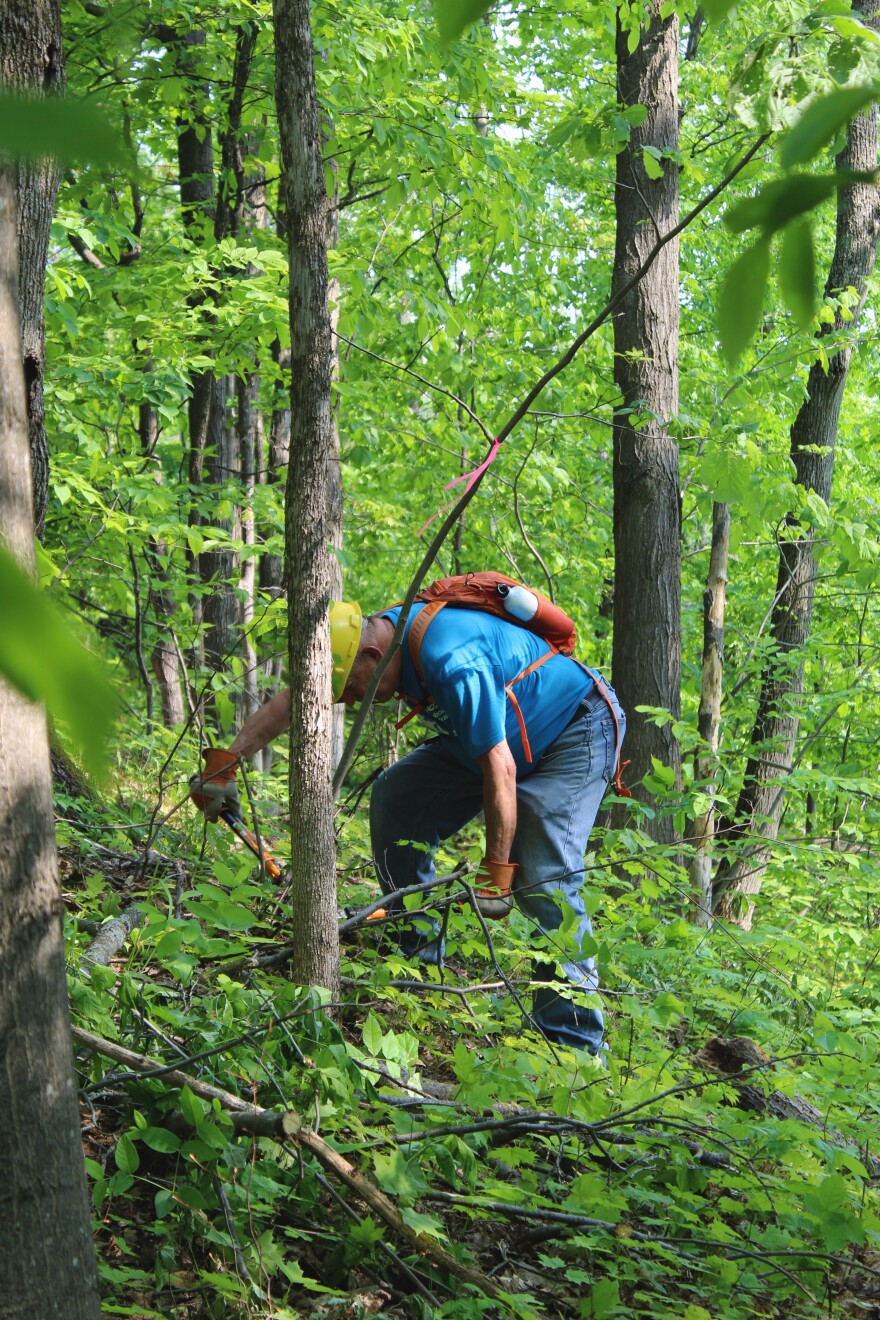Volunteers for the North Country Trail Association worked to clear branches, pry away roots and rake a path through the sprawling woods south of Boyne Falls.
Tents and cars spread across a nearby valley where the volunteers spent their free time last weekend.
A distinct line in the dirt marked the spot where the forest stopped and the trail began.
Pink, plastic ribbons tied around trees were the only way to navigate the crowded woods.
The North Country National Scenic Trail is the longest trail system in the United States. It spans 4,800 miles across eight states, from North Dakota to Vermont, according to the NCTA’s website.

Michigan’s portion of the trail is the longest of all eight states, totaling 1,180 miles and passing over the Mackinac Bridge.
Volunteers for the Jordan Valley 45-degree chapter of the association dedicated their “National Trails Day” weekend to the rerouting and restoring of a section of the trail.
The original stretch of trail, which was scheduled to be rebuilt more than a year ago, was destroyed during a timber harvest conducted by the Department of Natural Resources last year. The trail was then littered with debris during the March ice storms.
Kenny Wawsczyk, NCTA regional trail coordinator for Michigan, said the NCTA worked with the DNR to reroute the trail.
“When they do another logging operation years from now, they won’t necessarily have to worry about the trail because it will be either located in a better place on a stand boundary, which they can avoid, or in an area that they don’t plan to harvest,” he said.
Wawsczyk said the event was volunteer-led, as volunteers did trail maintenance, assisted with trail rerouting, planned the event and cleared the trail with chainsaws before the event.
Volunteers working with chainsaws during projects such as these require a specific title: Sawyer, working faller, journey level faller, or master faller.
Volunteers who want to become certified sawyers with the National Park Service must complete a two-day certification process — one day in the classroom and one in the field with a federally designated trainer. In addition, they must maintain current First Aid and CPR certifications and complete a one-time safety course called Trail Safe.

Each sawyer is also required to work with a “swamper,” who assists with trail cleanup and ensures safety during chainsaw work.
The certification courses for these titles are often in high demand, as they are only offered every two to three years, Wawsczyk said.
“Those classes typically fill up, but we’re always looking for new ones,” he said. “And then, especially with this ice storm, the Park Service has even looked for an additional class to help anybody who wants to become certified or re-certify as well to stay current.”
Duane Lawton, projects coordinator for the Jordan Valley 45 degree chapter, said that 17 volunteers had signed up for the event, most of whom were “regulars” or repeat volunteers.
15 volunteers showed up.
Though the “regulars” were able to finish the trail in a weekend, Lawton and other volunteers said that there is a growing need for younger individuals to help with the physical labor of projects.
“We have a core group,” Lawton said. “I think our chapter officially has about 120 members, but there’s probably 25 that are always there. We would like to have some people, more people, that are under age 50.”
Dove Day, previous trail and event coordinator for the Jordan Valley chapter, said that getting involved with the NCTA feels like you’re a part of “something huge.”
“All the chapters need help,” Day said. “And everybody needs nature.”
Anton Epskamp is a young, first-time volunteer for the Jordan Valley chapter and a Petoskey native.
Epskamp heard about the building through a NCTA member email said that the event was very special for him, as he was working in “his own backyard.”
“Not having any recorded hours, but still being a member of the chapter, I felt it was my duty to come out here and break some trail with everybody,” Epskamp said. “And that’s how I show my love for this planet is by being a steward, you know, passing on to the next generation, doing what I can. It’s real nice to be able to do that.”

Halfway through the weekend, Epskamp said he will “definitely” be volunteering again.
“Volunteers are the blood of the North Country Trail, like they keep everything going, they keep everything clear,” he said. “It’s a real treasure to be able to see that in-person finally.”
Some volunteers, such as Evelyn Howell, are trying to instill an interest in the trails at an early age.
Howell was a contributor to the creation of Junior Ranger booklets for the North Country Trail, provided by the National Park Service. The booklets offer facts about the trail, various activities and a Junior Ranger badge.
“It’s for children that are 3 to 4, all the way up to children of 99,” Howell said.
Though the trail south of Boyne Falls is ready for use, Lawton said the volunteers have “a lot of other projects” in the works for the future.
This story was produced by the Michigan News Group Internship Program, a collaboration between WCMU Public Media and local newspapers in central and northern Michigan. The program’s mission is to train the next generation of journalists and combat the rise of rural news deserts.




